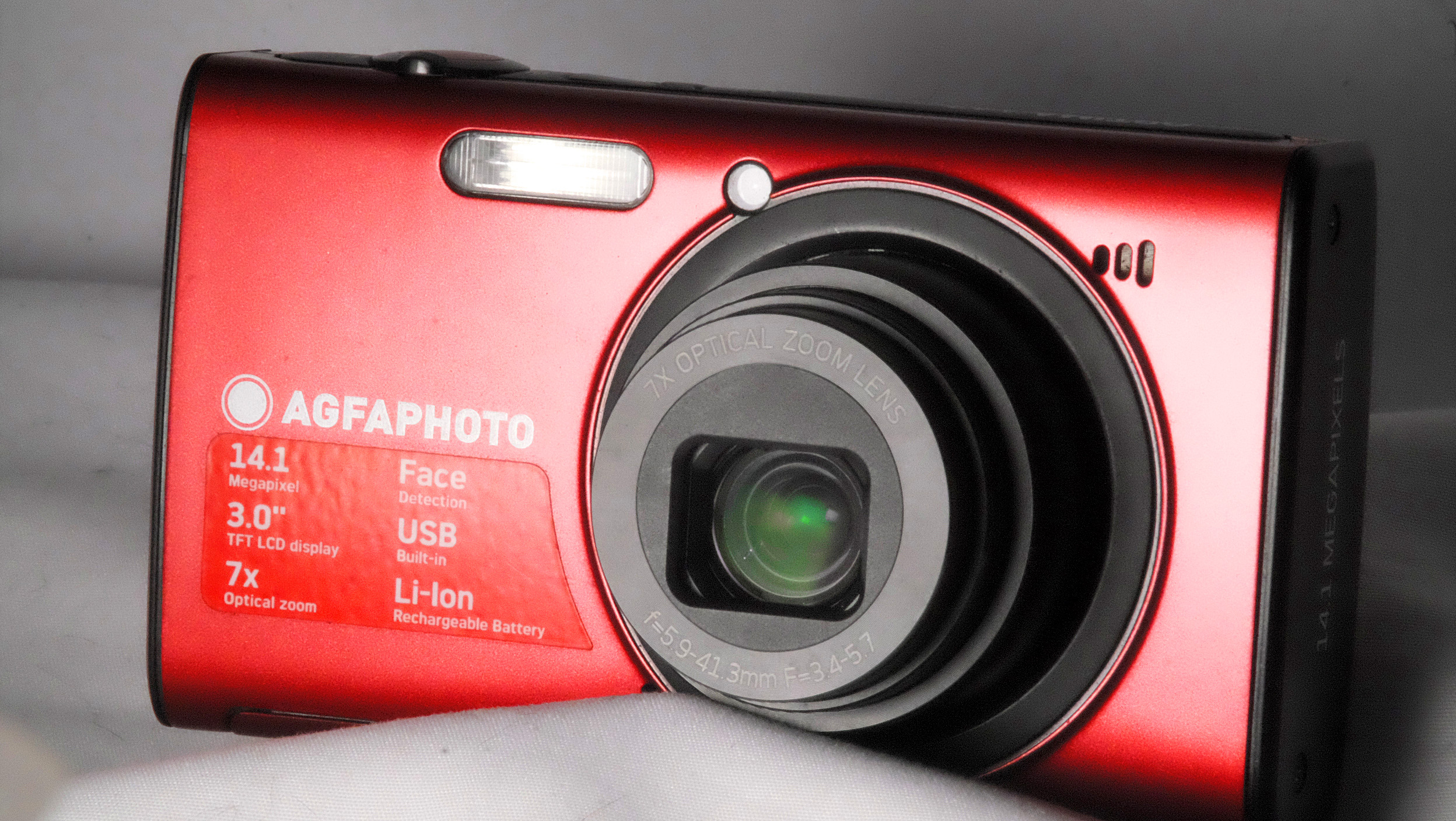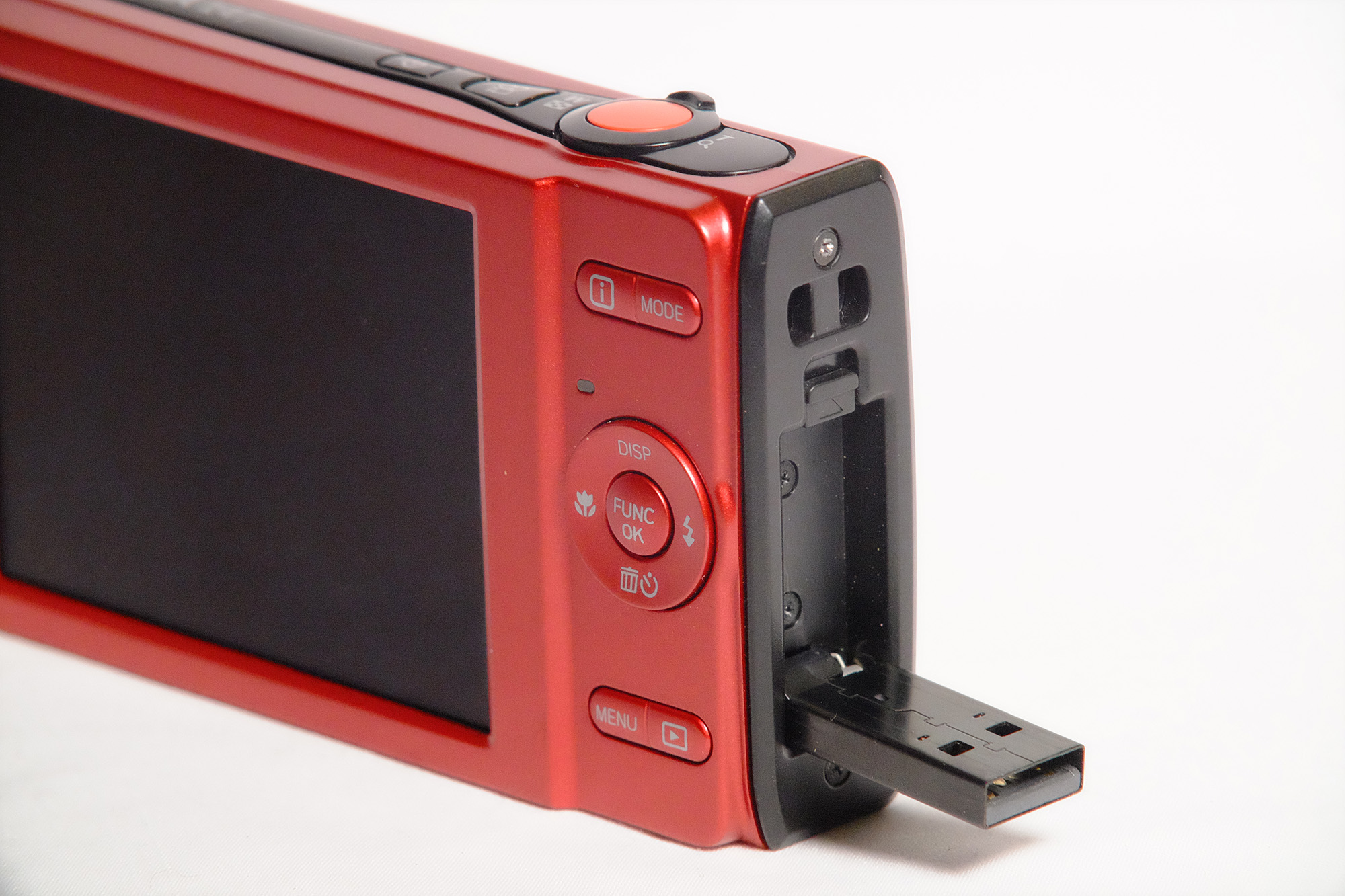2021.08.02 - Published
2022.07.26 - Everything re-written
AgfaPhoto Optima 147
HD Digital Camera
Announced - March 2011 (Philippines)
Official SRP - PhP 5,995.00 (2011)
Focal Range (35mm Equivlent) - 33-230mm
Zoom - 7x optical zoom, 6x digital zoom
Sensor - 1/2.3-inch CCD
Resolution - 14.1 Megapixels
Crop Factor - 5.6x
Crop Factor - 5.6x
ISO Sensitivity - 64-1600
Shutter Speeds - 30" to 1/2000"
Maximum Aperture - f/3.4 (W) - f/5.7 (T)
Minimum Focusing - 50cm (W), 60cm (T)
Get closer with Macro Mode
Optical Formula - 9 el/7 gr (1 asph. lens)
Exposure Modes - Manual (Program), Automatic
Image Stabilization - Electronic
Video Format - MPG/MOV
Resolution - 1920x720p, 640x480p, 320x240p
Framerate - 30fps, 15fps
Maker - RedDot Imaging, China
Photo Album
========================================
History
AGFA (abbreviation for Aktien-Gesellschaft für Anilin-Fabrikation) was a major producer of cameras, accessories, film and photographic chemicals, founded in Berlin, Germany in 1867. In the 1990s, Agfa was a very popular brand that sold cheap film negatives. Agfa began venturing into digicams in the late 2000s, and one of them was this Agfa Optima 147 HD Digicam (2011). "147" stands for 14 megapixels with 7x optical zoom. The camera manual shows that this model was "©2011". It looks like they stopped marketing digicams after this came out.
Design
This Agfa Optima 147 comes in a beautiful frosted red color and gives me warm feelings having it, I also like the contours and design. It doesn't look or feel cheap. The buttons and layout are typical digicam; they have a smooth feel when your fingers press or drag the dials. It has one unique feature, there is a pop-up USB that allows you to directly plug the camera to your computer or USB charger.
========================================
Build/Handling
The location of buttons is easy to familiarize and very intuitive. The rear side has the Mode button at the very top, which is the very first thing I access when it turns on. I only used Manual, Portrait and Movie modes. The info 'i' button next to it is for toggling AF assist, whether you want face/smile detect or off.
The directional pad is for toggling Display, Flash, Trash/Timer, and Macro. I touch nothing here but the Macro, a very useful feature. The camera randomly turns off the Macro when I zoom or access the Menu; that is why I often check the macro mode, this is one inconvenience.
The Function/OK button in the middle is my third most accessed button. Each mode will have their own functions available for toggling, but all options are available when in Manual mode -- picture size/quality/aspect ratio (usually at 3:2 or 16:9), white balance (best always in Auto even if you like manual), Color Profile (always OFF), ISO (rarely bumped to 1600), and Exposure Value.
The last two buttons at the bottom of the camera's rear interface are the Menu and Preview buttons. I don't visit the Menu very often; the only things I toggle in Menu are AF Mode, metering (center, spot, AiAE), continuous shot, and digital zoom.
========================================
Performance
Aspect ratio is tied with image sizes -- 3:2/4:6 at 12MP, 16:9 at 10MB, everything else is 5:4. The camera zooms very quickly and wastes no time to get the focal length you want. Autofocus is fast when shooting outdoor, particularly for portrait. It has a tendency to hunt alot and miss when shooting macro. My workaround is to set the camera to 'single AF', and once it sets (the focus often lands behind my subject), I move back a bit until my subject is in perfect focus.
The first annoying thing is that the camera randomly resets. For example, when I turn the camera on, it is often where I left it eg. Manual Mode, but sometimes randomly goes back to Automatic mode. It also randomly exits Macro Mode when zooming.
The second annoying thing is that when not using flash, it has a tendency to select slow shutter speeds from 1/2" to 1/28" at best when using ISO1600. I tried many workaround and it still uses slow shutter speed no matter what -- using a bright video light, cranking up the EV or ISO, using 'Sports' in Scene Mode. The only darn thing that will get the camera to shoot with a fast shutter speed is shooting outdoor in noontime or using the flash.
 |
| Using external video light 16mm (35mm Film = 90mm) 1/4", f/4/2, ISO 200 |
 |
| Using external video light 8mm (45mm) 1/7", f/3.7, ISO 200 |
========================================
Image Quality
The AgfaPhoto Optima 147 has 9 elements in 7 groups (1 aspherical element), and the elements have a beautiful multicoated green sheen. It can produce near-DSLR quality, beautiful low-key shots. The colors have a tendency to be warm, but I prefer warm than cool. Picture Profile should be left alone in 'Off'. Don't ever use Vivid, all colors will look psychedelic.
I would like to make a comparison of the Agfa Optima 147 to my Samsung ES25 and Samsung ES95. The Samsung ES25 (bought 2011) was my first ever REAL camera which gave me the opportunity to shoot photos in near-DSLR quality. I often complained about the Samsung's colors being washed out (blues become light cyan, deep purples become light pink), but the images are crispy and clean. Whereas the Agfa could be just as sharp, but a little grainy and noisy even with ample or proper lighting. The Agfa has a warmer rendition but colors are alive. Lastly, the Samsung was more convenient to use, it does its job and the controls or functions don't get in the way. Whereas the Agfa has quirks as mentioned before (macro mode randomly turning off so you often have to check or re-engage the macro in the middle of a shoot).
IMHO, the Samsung has better clarity, but overall, the Agfa is very good and more preferred. The Agfa can also focus much closer than the Samsung, and the AF is fairly good. The only thing keeping from fully enjoying the Agfa are the quirks.
 |
| This unprocessed shot was taken with a digicam, not a DSLR! Using an external video light. |
 |
| Another beautiful low-key shot, no edit! |
 |
| This unprocessed shot taken with an external video light. |
 |
| It struggles with macro focusing even in bright sunlight. |
 |
| Taken with an external video light above me. ot in Manual mode - 1/137", f/3.7, ISO 800. This is an unprocessed image. |
 |
| This was shot outdoor in Portrait Mode (flash). No edit. It renders skin in a beautiful soft flattering way, not sharp like a macro lens. |
 |
| My first ever sample shot with this camera! Taken 8 December 2019. |
 |
| This is an unedited shot. You can get near-DSLR quality with any digicam! |
========================================
Video Quality
The maximum video resolution of this camera is only 1920x720p at 30fps. This resolution is pretty common at the time (early 2010s). There is a Manual exposure mode for stills (not true Manual but rather a Program AE!). In video mode, you can only control EV and video size/fps while everything else is automatic. You cannot set the ISO for videos.
The camera reacts quickly to light exposure which is a good thing, but this is also a problem if you have a mix of bright and dark areas (eg. moody or low key). The exposure constantly changes quickly as if the light appears to be flickering (at any metering mode Center, Spot or AiAE). I wish it had an option for 'auto exposure lock', that would help alot!
========================================
Conclusion
The point of using a digicam over mobile phone in the 2020s is the benefit of an optical zoom. The zooming of this camera is surprisingly fast and smooth. Shooting stills with the Agfa Optima 147 yields pleasing results. It's not as clear as the Samsung digicam I used to own ten years before, but it's okay. The biggest limitation with this camera is video.
The Agfa Optima 147 HD Digicam used to sell almost 6k Pesos brand new in 2011, nowadays digicams sell for next to nothing. It wouldn't hurt it you wanted to experiment and explore digicams if you are looking to level-up your photography from your phone-camera.
The absurdity I find is that some old and worse digicams are still selling for around 5k or more in the used market. With that price range, you could already buy yourself a used mirrorless camera (or an old DSLR like the Nikon D60) with kit lens included -- the benefits are bigger APS-C sensor, interchangeable lenses, and full manual control that opens a window of creative opportunities.
Further Reading
# # # E N D # # #

























0 comments:
Post a Comment